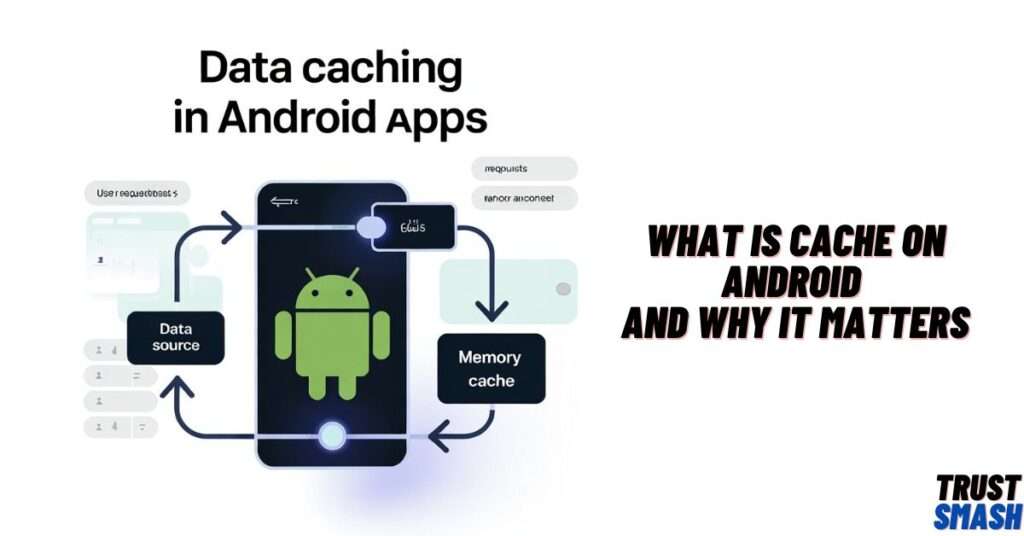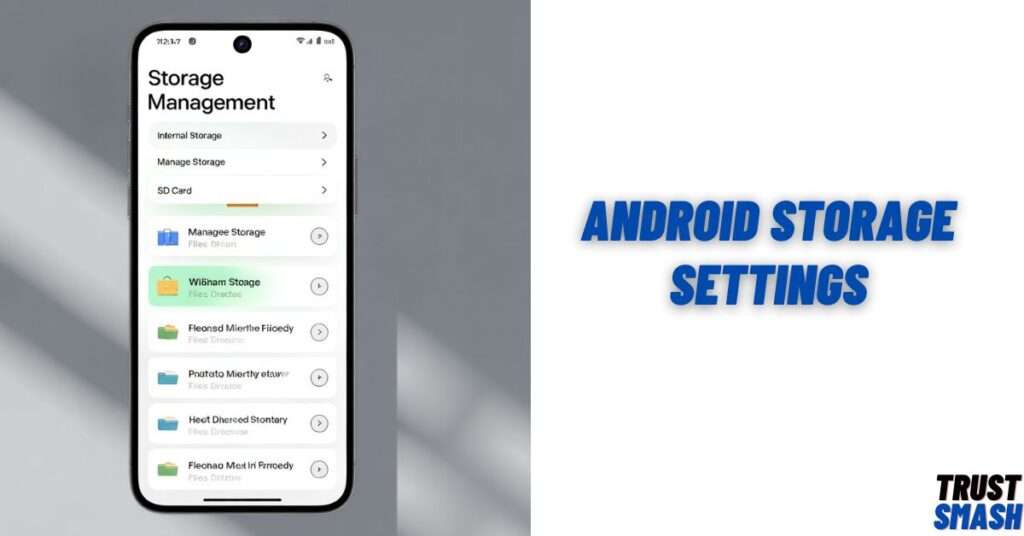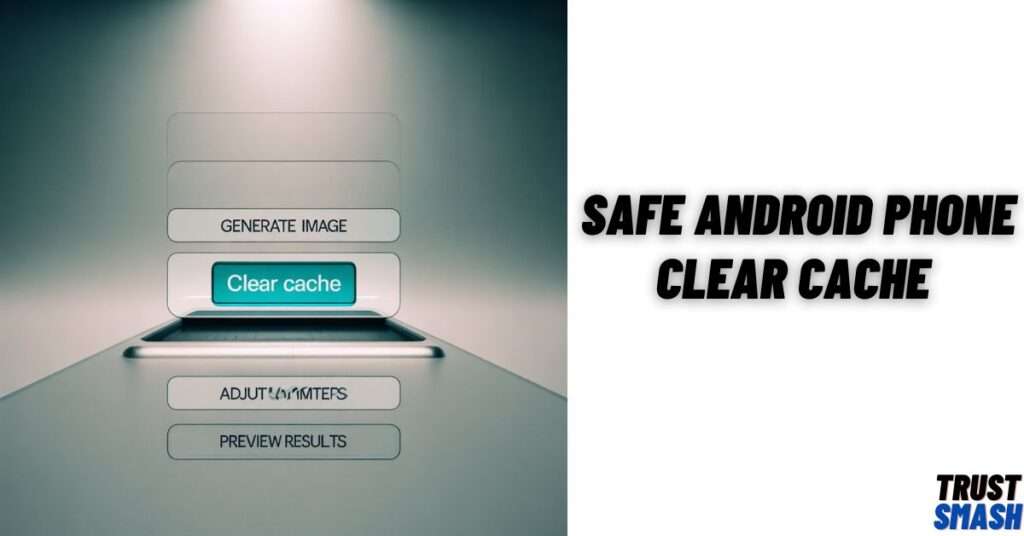Is your Android phone slowing down, freezing, or showing storage full errors? Many Android users face these problems but don’t realize that cache buildup on Android could be the cause. Clearing your cache can fix storage issues Android devices often face, boost performance, and improve app behavior. But you must do it the right way. In this guide, you’ll learn how to clear cache on Android phone safely while keeping your data intact. We’ll also explore myths, pros, cons, and automation methods for cache cleaning.
What Is Cache on Android and Why It Matters

Cache is a collection of temporary files that Android devices store to make apps open faster. For example, when you use YouTube, the app saves thumbnails and search results in a hidden folder so it doesn’t have to reload everything the next time. These files are useful because they boost Android phone performance, but knowing How to Clear Cache on Android Phone Safely ensures you enjoy the speed without risking issues.
Over time, cached data builds up and takes a lot of space. This buildup can cause lag, slowdowns, and unexpected bugs. Even if you delete photos or videos, the hidden culprit may still be the cache. That’s why understanding How to Clear Cache on Android Phone Safely is crucial for keeping your phone running at peak performance.
Signs Your Android Phone Needs a Cache Clear
If your device is acting strangely, it might be time to clear the Android cache. Common warning signs include frequent app crashes, frozen screens, or sudden battery drain. You might even notice your phone heating up during light use—a clear indicator it’s working harder than necessary due to overloaded cache file location in Android areas. Learning How to Clear Cache on Android Phone Safely can help fix these problems without causing new ones.
Another red flag is receiving “storage full” alerts even after deleting large files. This often means hidden cache data is taking up valuable space in the background. When these issues appear, knowing how to Clear Cache on Android Phone Safely will ensure you free up space, improve performance, and keep your device running smoothly.
Pros and Cons of Clearing App Cache Regularly
There are both advantages and drawbacks to clearing your phone’s cache. The main benefit is that it frees up valuable Android storage space, removes temporary files, and can resolve issues like app freezing or update failures. When you follow the right steps for How to Clear Cache on Android Phone Safely, you’ll often notice a performance boost since apps no longer store old or corrupted data.
However, there are also downsides. Some apps may load more slowly afterward because they need to rebuild certain files. You might have to log back in to a few apps, and if you do it too often, it can consume extra mobile data and battery. That’s why How to Clear Cache on Android Phone Safely should be done only when necessary—not as a daily routine.
Difference Between App Cache and System Cache
Many people ask, what’s the difference between app cache vs system cache? App cache includes files saved by individual apps like Instagram or Gmail. These help the apps open faster and work smoother. On the other hand, system cache belongs to the Android system itself and is used during updates or processes like booting.
Here’s a quick comparison in table format:
| Type | Purpose | Safe to Clear? |
|---|---|---|
| App Cache | Stores files for app speed | Yes |
| System Cache | Helps Android run smoothly | Sometimes |
Both can slow down the phone when full, but app cache is safer to delete. Deleting system cache should only be done if you’re an advanced user or facing serious problems.
How to Access Storage Settings on Android

To manage your cache, you need to visit Android system settings first. Go to your phone’s Settings app. Then, find Android storage settings or tap on “Apps & notifications.” Choose any app and tap “Storage.” Here you will see how much space is used by the app, its app data vs cache data, and the clear cache option.
If you’re using a Samsung, Pixel, or Motorola phone, the names may vary slightly. But the method stays the same. This menu is where you can manage your cache file location Android and decide what to remove.
How to Clear Cache on Android Phone Safely

Now let’s learn how to clear cache on Android phone safely. Open settings, go to apps, choose the app, then tap on storage. You’ll see a button that says “Clear Cache.” Tap it, and the cache will be deleted instantly. Don’t press “Clear Data” unless you want to remove saved settings and accounts.
This method doesn’t delete your photos, messages, or app content. It’s the safest way to do a clear Android cache without harming your phone. Repeat the steps for apps that are taking up too much storage. Apps like Chrome, Facebook, and Instagram are usually the biggest culprits.
Best Apps for Managing Cache Without Root
If you want help with cleaning, there are Android cleaner apps that make the job easier. Some of the best apps to clear cache include Files by Google, CCleaner, and SD Maid. These apps scan for junk, old files, and unused app cache and help free up storage Android in one tap.
Most of these data cleaning apps don’t need root access, making them safe for normal users. They also give options to delete duplicate files, large files, and even unused apps. Think of them as a full cache management tool that keeps your phone tidy.
What Happens After You Clear Cache?
You may wonder about post-clear cache behavior. Right after you clear the cache, the app might take a little longer to load the first time. That’s because it needs to rebuild the temporary files. However, the problem you were facing, like crashing or freezing, should disappear.
Clearing cache does not delete your messages, contacts, or saved data. It simply removes unneeded files that your phone no longer uses. The app continues to work normally, but in a refreshed state.
When Should You Avoid Clearing Cache?
There are times when not to clear cache. If your phone is running smoothly, there’s no need to mess with it. Also, avoid clearing cache before traveling or during emergencies, as some apps may require reloading and internet connection.
For apps like banking, or two-factor login apps, clearing cache might log you out. So only clean these caches when you’re sure you can log in again. Overdoing it with memory cleaner tools may also slow down performance instead of improving it.
How to Automate Cache Cleaning on Android
You can also automate Android cache clearing using smart tools. The easiest method is using the Files by Google app. It has a built-in feature to suggest junk removal based on usage. You can also use apps like SD Maid to set a cleaning schedule.
Advanced users can try apps like Tasker, which let you create rules for automatic cleaning. For example, you can set it to clear Chrome cache every week or when storage drops below a certain level. Automation keeps your phone clean without daily effort.
Common Myths About Clearing Android Cache
Some people believe that clearing cache boosts your phone forever. That’s false. Cache helps apps load faster, so deleting it too often can backfire. Another myth is that clearing cache deletes personal files. In truth, it removes only temporary files Android doesn’t need anymore.
Many also think that all Android cleaner apps are unsafe. That’s not true either. Trusted apps from the Play Store are tested and safe to use. Understanding app cache vs system cache helps clear these doubts and use cache cleaning smartly.
Final Tips for Keeping Your Android Running Smoothly
To keep your phone in top shape, clear the cache only when needed. Also, delete unused apps, update your phone regularly, and back up data to the cloud. These steps help in maintaining high performance and saving storage.
You can also schedule monthly cleanups using data cleaning apps or review your app usage to reduce cache buildup on Android. With these habits, you’ll enjoy a faster, cleaner, and more reliable Android phone experience.
Visit my website if you want to gain more knowledge through high-quality blogs like this one.
Is it safe to clear the cache on Android?
Yes, it’s completely safe and doesn’t delete your personal data or settings.
How do I clear an Android cache?
Go to Settings > Apps > select an app > Storage > tap “Clear Cache.”
Does Android automatically clear the cache?
No, Android doesn’t clear all app caches automatically; it must be done manually or with cleaner apps.
Is it a good idea to clear the cache?
Yes, when your phone is slow or apps misbehave, clearing the cache can help fix those issues.